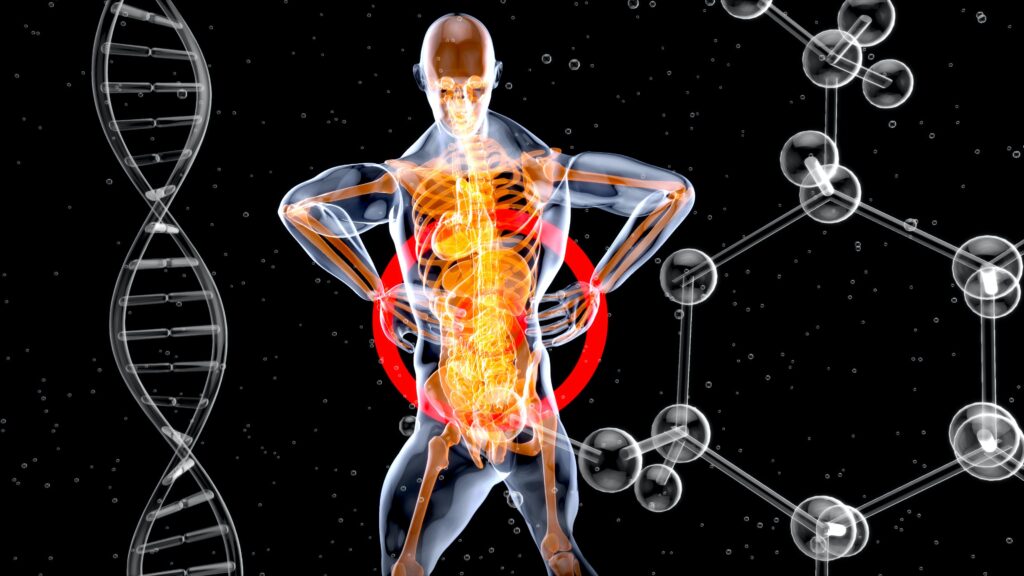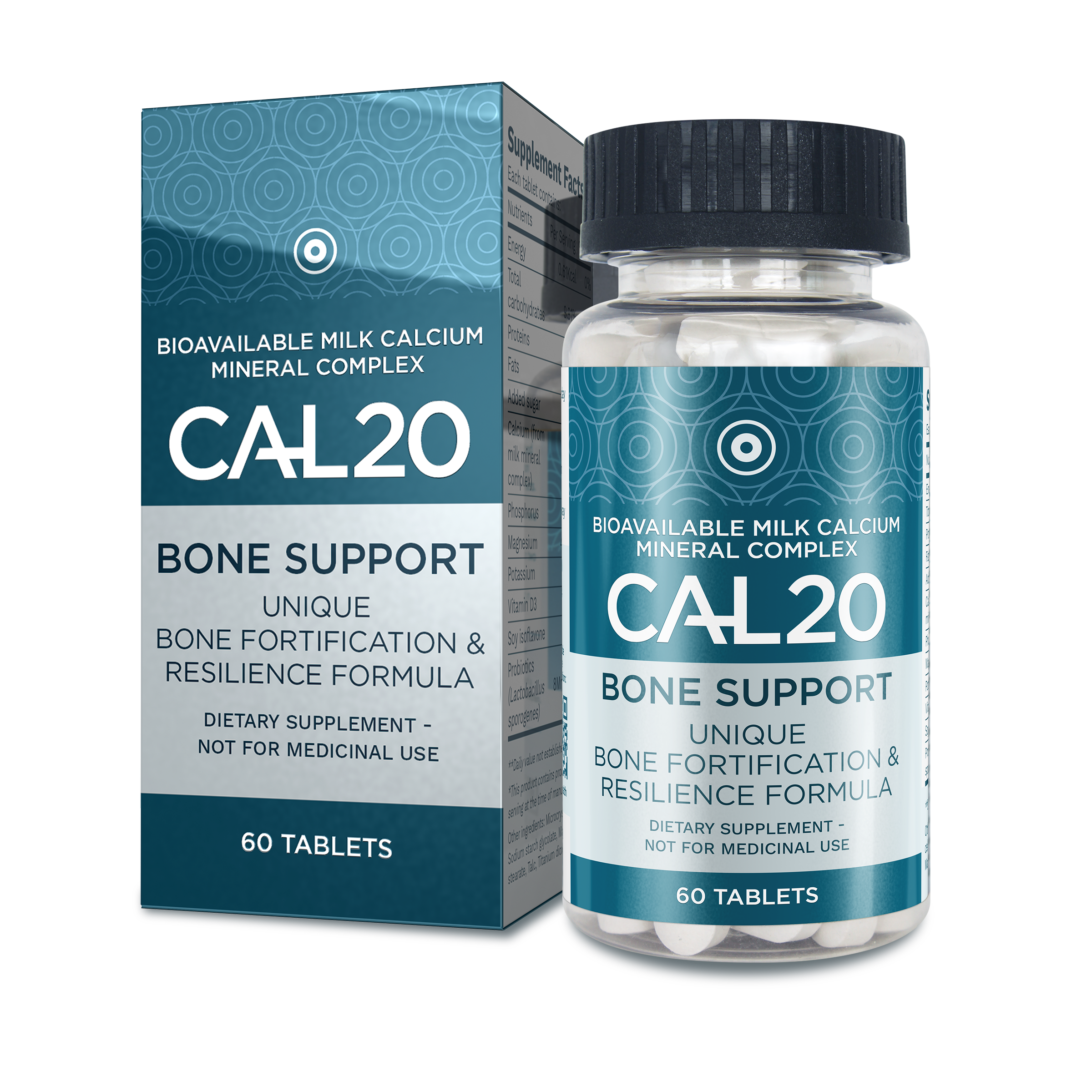“A Multiple Centre, Prospective Open Labelled Study to Evaluate Safety and Efficacy of Cal20 Tablets a Nutraceutical Formulation in postmenopausal females with Osteoporosis”
Proyurveda Clinical Trial Report
10-Dec-2005 Version 1.0 Confidential – Protocol & Synopsis Page 1
CLINICAL STUDY REPORT
Final Study Report
| Study Title: | “A Multiple Centre, Prospective Open Labelled Study to Evaluate Safety and Efficacy of Cal20 Tablets a Nutraceutical Formulation in postmenopausal females with Osteoporosis”. |
| Protocol Number: | PAY/FI/O-01 |
| Investigational Product: | Cal20 Tablets |
| Indication: | Menopusal Osteoporosis |
| Study Design: | Multiple Center, Prospective, Open label Study |
| Sponsor Signatory: | Mr. Anand Rao |
| Development Phase: | Safety and efficacy evaluation |
| Study Initiation Date: | First subject enrolled: 20-Feb-2005 |
| Study Completion Date: | Last subject completed: 25-Jul-2005 |
| Investigators: | Dr.N.Koteshwar Rao Dr.M.Janardhan Dr.Sharanappa Dr.S.H.Patel |
| Safety Reporting | Dr. Chandra Mohan |
| Date and Version of the Report: | 10-DEC-2005; Version 1.0 |
This study was conducted in compliance with the ICH Harmonized Tripartite guideline regarding Good Clinical Practice and Declaration of Helsinki (updated version as amended by the WMA General assembly, Tokyo 2004). The essential documents of the study will be archived as appropriate.
Proyurveda Clinical Trial Report 10-Dec-2005 Version 1.0 Confidential – Protocol & Synopsis Page 2
PROTOCOL SYNOPSIS
| Name of Sponsor/Company: Proyurveda |
| Protocol Title: A Multiple Centre, Prospective Open Labelled Study to Evaluate Safety and Efficacy of Cal20 Tablets an Ayurvedic Formulation in postmenopausal females with Osteoporosis |
| Protocol Number: PAY/DP-01 |
| Name of Investigational Product: Cal20 Tablets |
| Objectives and Endpoints: Objectives: Primary Objective: To assess the efficacy of Cal20 tablets, a Polyherbal combination in postmenopausal females with Osteoporosis. Secondary Objective: To evaluate the Safety and Tolerability of Cal20 tablets, a Polyherbal combination in postmenopausal females with Osteoporosis. End Points: Efficacy: The primary efficacy variable is change in lumbar spine and total hip bone mineral densities (BMD) at the end of 4 weeks and 8 weeks of therapy. Safety : 1. Changes in Vital Signs from Baseline to End of treatment. 2. Change in the lab parameters (Haematology, Liver function test, Renal function test) 3. Assessement of the number of adverse events occurred and judging their causal relationship to the study drug. |
| Study Design: This was an open label, multiple center study to evaluate the safety, efficacy and tolerability of Cal20 Tablets in postmenopausal females with Osteoporosis. The study was scheduled to have 3 visits: Visit 1 – Screening/baseline Visit (Day 1 to Day -5) Visit 2 – End of 4 weeks Visit 3 – End of 8 weeks (final visit) After obtaining informed and written consent, subjects were screened for eligibility according to the set inclusion and exclusion criteria. At visit 1, consenting and eligible subjects were dispensed the study medication. Subjects were provided with diaries to note the compliance to study medication, concomitant medication, and adverse events (AEs) during the study period. |
| Number of subjects Planned: A total of 140 subjects were planned to be enrolled assuming 20% dropouts the evaluable sample size to be approximately 112. Study Duration for Each subject: approximately 8 weeks |
| Inclusion Criteria: ∙ Female subjects aged 50 years to 65 years both inclusive |
Proyurveda Clinical Trial Report 10-Dec-2005 Version 1.0 Confidential – Protocol & Synopsis Page 3
| Females with moderate to severe postmenopausal osteoporosis as indicated by a spine BMD T-score value at the hip or spine below –1.0 ∙ Subject with ability to understand and sign written informed consent form, which must have been obtained prior to screening. Subjects willing to comply with the protocol requirements. |
| Exclusion Criteria ∙ Known hypersensitivity to herbal products and any major hematologic, hepatic, metabolic, gastrointestinal or endocrine disorder requiring any other anti Osteoporosis medication ∙ Diagnosis of cancer within the past 5 years ∙ Current diagnosis or history of alcoholism or drug dependence ∙ Use of any experimental medication within 1 month prior to screening or as concomitant medications ∙ Non compliant patients ∙ Any other reason that in the opinion of the investigator prevents the subject from participating in the study or compromise the patient safety ∙ Subjects with known hypersensitivity to any of the components of the formulation. ∙ Female subjects found positive in urine pregnancy test ∙ Subjects not willing to comply with protocol requirements Excluded Medications Prohibited Concomitant Medications: ∙ Concomitant administration of any other herbal drugs for the treatment of Osteoporosis will not be allowed during the course of the trial. |
| Withdrawal Criteria: Subjects may be withdrawn from the study by the Investigator or Sponsor under the following circumstances: 1. Request by the Subject. 2. At the discretion of the investigator in consultation with the Sponsor. 3. Violation of inclusion and exclusion criteria listed in the protocol. 4. Serious adverse event or reactions requiring withdrawal of subject as per investigator discretion. 5. Intercurrent illness where continuation of study poses serious risk to the Subject. 6. If Sponsor decide to discontinue the study 7. Subjects who develop signs & symptoms of hypersensitivity. 8. Subjects who become pregnant during the study period. |
Post Treatment Follow-Up: Post Treatment Follow-Up: No post treatment follow-up will be done for this study. However, investigator should continue to follow up all Serious Adverse Events or other Adverse Events that had been reported during the study conduct until they were resolved or assessed to be stable (maximum of 28 days) by the Investigator.
Investigational product, dosage and mode of administration:
Two or three Cal20 tablets twice daily as per investigator’s discretion based on assessment of joints affected by Osteoporosis at baseline visit.
| INGREDIENTS | COMPOSITION | MEDICINAL BENEFITS |
| Calcium | 275 mg | Calcium supplement |
| Phosphorus | 135 mg | Phosphorus supplement |
| Magnesium | 12.5 mg | Magnesium supplement |
| Potassium | 10 mg | Calcium supplement |
| Magnesium (from magnesium oxide) | 30 mg | Magnesium supplement |
| Soy Isoflavone | 30 mg | A phytoestrogen that mimics the action of estrogen |
| Vitamin D3 | 300 IU | Vitamin D3 supplement |
| Probiotics | 30 mg | Enhances Absorption of Nutrients |
Reference therapy, dosage and mode of administration:
Not applicable
Criteria for Evaluation Efficacy Variables
Improvement in Efficacy, assessed by change in BMD at the end of 4 weeks and 8 weeks of therapy.
Safety Variables
1. Changes in Vital Signs from Baseline to End of treatment.
2. Change in the lab parameters (Haematology, Liver function tests and Renal function test)
3. Assessment of the number of adverse events occurred and judging their causal relationship to the study drug.
| Statistical Considerations: Appropriate descriptive statistics such as n, mean, median, standard deviation, minimum and maximum were used for summarizing the continuous variables. Frequencies and percentages were computed for categorical data. Percentages were calculated based on non-missing observations. |
| Sample size Sample size was calculated assuming the bone mineral density changes with an expected difference from baseline to the end of 8 weeks of treatment. The planned sample size was 140 subjects to be enrolled with 80% power & a significance level of |
Proyurveda Clinical Trial Report 10-Dec-2005 Version 1.0 Confidential – Protocol & Synopsis Page 5
| 0.05, and assuming a dropout rate of 20% there would be approximately 112 subjects evaluable. |
| ITT This population will consist of all subjects screened and enrolled who have had at least one post baseline assessment, with the exception of those who have documented evidence indicating that they did not receive any study treatment. All subjects who withdraw post enrolled will be included in this population, providing they have at least one post-baseline assessment. This will be the primary population for the analysis of all efficacy data. |
| PP This population will consist of all subjects in the ITT population who do not have any protocol violations that could affect their efficacy assessment and completed the treatment as per protocol. |
Proyurveda Clinical Trial Report 10-Dec-2005 Version 1.0 Confidential – Protocol & Synopsis Page 6
2.0 SYNOPSIS
| Name of Sponsor : Proyurveda |
| Name of Finished Product: Cal20 TABLETS |
Name of Active Ingredients:
Each uncoated Tablet contains:
| INGREDIENTS | COMPOSITION | MEDICINAL BENEFITS |
| Calcium | 275 mg | Calcium supplement |
| Phosphorus | 135 mg | Phosphorus supplement |
| Magnesium | 12.5 mg | Magnesium supplement |
| Potassium | 10 mg | Calcium supplement |
| Magnesium (from magnesium oxide) | 30 mg | Magnesium supplement |
| Soy Isoflavone | 30 mg | A phytoestrogen that mimics the action of estrogen |
| Vitamin D3 | 300 IU | Vitamin D3 supplement |
| Probiotics | 30 mg | Enhances Absorption of Nutrients |
| Investigators: Dr.Bipin Chandra Lingappa Shankar Dr.G.Elisha Dr.K.Vinaya Latha Dr. Rukmini Rai |
| Study Center: 1) Cure Well Joints Hospital,Vijayanagar, Bangalore-560040 2) Ayurveda Chikitsa Kendra, Olassery, Palakkad 678551 (Kerala) 3) Mahatma Gandhi Institute Of Ayurvedic College & Research Centre, Jaya Mahal Road, Bangalore-560006 4) Charka Super Speciality Ayurveda,Vishrambag Ahmednagar 414001 |
| Study Period: First subject enrolled: 12-FEB-2005 Last subject completed: 15-MAR-2006 |
| Phase of Development: Safety and efficacy evaluation |
| Objectives: Primary Objective: To assess the efficacy of Cal20 tablets, a Polyherbal combination in postmenopausal females with Osteoporosis. Secondary Objective: To evaluate the Safety and Tolerability of Cal20 tablets, a Polyherbal combination in postmenopausal females with Osteoporosis. |
| Methodology: This was an open labele, multiple center study to evaluate the safety, efficacy and tolerability of Cal20 tablets in postmenopausal females with Osteoporosis. The study was scheduled to have 3 visits: Visit 1 – Screening/baseline Visit (Day 1 to Day -5) Visit 2 – End of 4 weeks |
Proyurveda Clinical Trial Report 10-Dec-2005 Version 1.0 Confidential – Protocol & Synopsis Page 7
| Visit 3 – End of 8 weeks (final visit) After obtaining informed consent, subjects were screened for eligibility according to the set inclusion and exclusion criteria. At visit 1, consenting and eligible subjects were dispensed the study medication. Subjects were provided with diaries to note the compliance to study medication, concomitant medication, and adverse events (AEs) during the study period. The following investigations/assessments were carried out as per the schedule: Table 2-1: Schedule for Investigations/Assessments Investigations Schedule of assessment: Joints affected by Osteoporosis evaluation and Visit 1,Visit 2, Visit 3 BMD Blood Sample (Liver Function Test [LFT], Visit 1,Visit 2, Visit 3 Renal Function Test) Vital signs Visit 1, Visit 2, Visit 3, Blood Sample (Haemogram) Visit 1,Visit 2, Visit 3 Urine Examination Visit 1,Visit 2, Visit 3 Urine Pregnancy Test Visit 1 For the remaining schedule, please refer to Times and Events Table (Table 2-2). |
| Number of Subjects (planned and analyzed): Planned: 140 Enrolled: 112 Analyzed : 112 |
| Diagnosis and Main Criteria for Inclusion: The study population consisted of subjects of either sex of 50 to 65 years of age, in postmenopausal females with Osteoporosis. |
| Test Product, Dose, Mode of Administration: The study drug (dose: two or three Tablets) was administered orally twice or thrice daily for 8 weeks based on assessments of BMD affected by Osteoporosis at baseline visit as per investigator’s discreation. |
| Reference Therapy, Dose, Mode of Administration: N/A |
| Duration of Treatment: approximately 8 weeks. |
| Criteria for Evaluation: Primary Efficacy Endpoint: The primary efficacy variable is change in lumbar spine and total hip bone mineral densities (BMD) at the end of 4 weeks and 8 weeks of therapy. Safety : 1. Changes in Vital Signs from Baseline to End of treatment. 2. Change in the lab parameters (Haematology, Liver function test, Renal function test) 3. Assessement of the number of adverse events occurred and judging their causal relationship to the study drug. |
Proyurveda Clinical Trial Report 10-Dec-2005 Version 1.0 Confidential – Protocol & Synopsis Page 8
| Statistical Methods: The full details of the statistical methods pertinent to the analyses performed throughout the study are provided in Section 15 of the study protocol. Sample size was calculated assuming the bone mineral density changes with an expected difference from baseline to the end of 8 weeks of treatment. The planned sample size was 140 subjects to be enrolled with 80% power & a significance level of 0.05, and assuming a dropout rate of 20% there would be approximately 112 subjects evaluable. Appropriate descriptive statistics such as n, mean, median, standard deviation, minimum and maximum were used for summarizing the continuous variables. Frequencies and percentages were computed for categorical data. Percentages were calculated based on non-missing observations. Intention to treat (ITT) population: This population had consisted of all subjects screened and enrolled who have had at least one post baseline assessment, with the exception of those who have documented evidence indicating that they did not receive any study treatment. All subjects who withdraw post enrolled will be included in this population, providing they have at least one post-baseline assessment. This will be the primary population for the analysis of all efficacy data. Per-Protocol Population: This population had consisted of all subjects in the ITT population who do not have any protocol violations that could affect their efficacy assessment and completed the treatment as per protocol. |
| Summary and Conclusions: Efficacy results: Of the 140 enrolled subjects, 112 were treated with study drug; 112 completed the study. In this study, the relief from Osteoporosis was observed through change in BMD at visit 2 and 3 from baseline visit. The observed change proved that Cal20 tablets has efficacy in the management of clinically confirmed cases of Osteoporosis. At the end of 4 weeks 73.21% subjects showed improvement in BMD in postmenopausal females with Osteoporosis. The evaluations suggested pain relief in lower back and hip was enhanced in 87.50% of subjects at the end of 8 weeks. These results indicate that female postmenopausal subject with osteoporosis had benefitted from intake of study medication for 4 to 8 weeks. At the end of study the participants had relief from change in BMD due to Osteoporosis. This suggests that intake of Cal20 tablets leads to pain relief and free walk effectively in clinically confirmed cases of Osteoporosis patients. |
Proyurveda Clinical Trial Report 10-Dec-2005 Version 1.0 Confidential – Protocol & Synopsis Page 9
| Safety results: In the present study, of the total enrolled subjects, 112 were exposed to the study drug for a period of 8 weeks. However, 112 subjects completed the study. The safety set included 112 subjects. Overall, the study drug was well tolerated with all the co-morbid conditions/AE mild in intensity and unrelated to the study drug. There were no deaths or SAEs reported in the study. There were no discontinuations or withdrawals due to the treatment emergent adverse events. There were 5 (4.46%) subjects who reported at least one episode of co morbid condition or AE. The reported co-morbid conditions were upper respiratory tract infection and urinary tract infection. There were no clinically significant findings during treatment with regard to changes in the vital signs, physical examinations, or laboratory tests that would question the safety of study drugs. Conclusions This open label, multiple center, prospective study was aimed at studying the efficacy and safety of Cal20 tablets, an ayurvedic formulation in postmenopausal females with Osteoporosis. The efficacy endpoint was assessed at visit 2 at the end of four weeks and visit 3 at end of the study (at the end of 8 weeks). Out of 140 subjects screened, 112 subjects were enrolled in the study and 112 completed the study. The study drug showed good results in terms of efficacy; about 73.21% subjects showed relief from BMD in postmenopausal females with Osteoporosis at the end of 4 weeks (visit 2). There was progressive improvement in overall Osteoporosis symptoms from baseline to visit 3 (at the end of 8 weeks) in 87.50% of subjects. The observed change proved that subject with Osteoporosis had benefitted from intake of study medication for 8 weeks. In summary, this study confirms that intake is likely to provide relief in patients suffering from Osteoporosis. Cal20 tablets have good effect on improving the overall relief from Osteoporosis. People with Osteoporosis are likely to experience a noticeable improvement in symptoms attributable to Cal20 tablets usage. As far as safety is concerned, the treatment regimen was well tolerated by the subjects at the dosage administered in the study. All the co-morbid conditions/AE, for e.g., upper respiratory tract infection and urinary tract infection were mild in intensity. There were no SAEs or deaths reported in the study. None of the subjects were withdrawn from the study due to an AE. |
Proyurveda Clinical Trial Report 10-Dec-2005 Version 1.0 Confidential – Protocol & Synopsis Page 10
| None of the AEs was related to the study drug. There were only 5 (4.46%) subjects who reported at least one co –morbid condition or AE. There were no clinically relevant changes in the other safety parameters-vital signs, general and physical examination at any time during the study as assessed by the investigator. From the results of this trial, it is concluded that the trial supports improvement of Bone Mineral Density affected lumbar spine and hip in menopausal Osteoporosis due to intake of the investigational drug Cal20 tablets. |
Table 2-2: Times and Events
| Procedure | Screening /baseline | At the end of 4 weeks | At the end of 8 weeks |
| Visit and Study Day | Visit 1 (Day 1 to -5) | Visit 2 | Visit 3 (End of Study ) |
| Informed Consent | + | ||
| Medical History | + | ||
| Inclusion/Exclusion Criteria | + | ||
| Demography | + | ||
| Physical Examination | + | + | + |
| Vital Signs1 | + | + | + |
| Urine Pregnancy Test2 | + | ||
| Evaluation of osteoarthrits affected joints and BMD | + | + | + |
| Blood sample for Liver Function Test and Renal function test | + | + | + |
| Hemogram | + | + | + |
| Urine Analysis | + | + | + |
| Adverse events assessment | + | + | |
| Subject Diary Dispensing | + | + | |
| Subject Diary Collection | + | + | |
| Drug Dispensing | + | + | |
| Drug accountability | + | + | |
| Discharge from clinical study | + |
1Vital signs include Temperature, Blood Pressure, Pulse rate and Respiratory rate.
2Urine pregnancy test was performed in female subjects (who provided informed consent) of child bearing potential only at screening and must be negative before any study drug is administered. Female subjects who attained menopause for at least three years were not tested.
(Please note that the product known as ‘Dairical Plus’ has been branded, by Younger for Life, under its own brand label Cal20.)




